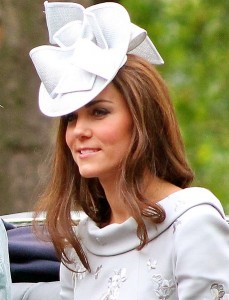the royal visit: representations

Hands have been shaken, places have been visited and the Duke and Duchess of Cambridge have left Australian land. You may find yourself reflecting on how the whole thing went, or what was actually achieved on this royal tour besides a lot of cooing and awwing at a ruling class who seemed to be here checking out postcolonial life. It certainly put Joe Hockey’s ‘the age of entitlement is over’ spiel on the back burner. Whether you’re a stalwart republican or monarchist or just an apathetic onlooker, the Duke and Duchess’s celebrity presence couldn’t be denied, by the media or the public.
Coincidently, arguments of whether the Duchess of Cambridge is or should be a role model for ‘our daughters’ have been clogging up the drain, along with meticulous commentary on clothing choices, motherly praise, and some general babble about reputation. Not to mention the cognitive dissonance some republicans are feeling towards Catherine and this whole clothing thing. This isn’t about the monarchy anymore; this isn’t about how the Royal Family helps those not fortunate enough to be a direct descendant of Edward I; this is about celebrity culture.
What’s most fascinating about the reportage of the royal visit is that, from what I’ve seen, news outlets more commonly report or have summed up the tour in pictures and not too many words. This highlights mainly that there is nothing really to report on. ‘We’ll just give you some pictures to look at of plutocrats and what they wore,’ the picture stories seem to say. Regardless of your political views, the representation of the Duke and Duchess by the media as an ideal, happy family brings to mind the face value attitude we have towards celebrities. In our eyes they aren’t even people. They are nothing more than a stereotype for the common people to aspire to be.
Modest, traditional and reserved, these are just some of the adjectives the media thinks Catherine embodies. The cameras may as well have zoomed in on the fibres of her underwear for all the discourse surrounding Catherine’s clothing. Neither Catherine’s personality nor intelligence was captured in any of her speeches, duties or, some might argue, performances.
Despite the progression of feminism and what it has achieved, this visit has shown me that we have never really uncorked the compulsion to construct a hegemonic representation that we all must follow in order to be liked or loved; and encourage, uphold, and yes, even dispute their worth, throwing aside all other silly notions that these are real people with thoughts, feelings and convictions.


I love this, Emilie. I think it’s so true that we use these controlled images of the royals to reinforce the ideal woman (motherly, thin, beautiful, passive, kind). It’s so important to be aware of this power the media has to suggest how to perform femininity!
Pingback: Feminist News Round-up: 03.05.14 | lip magazine